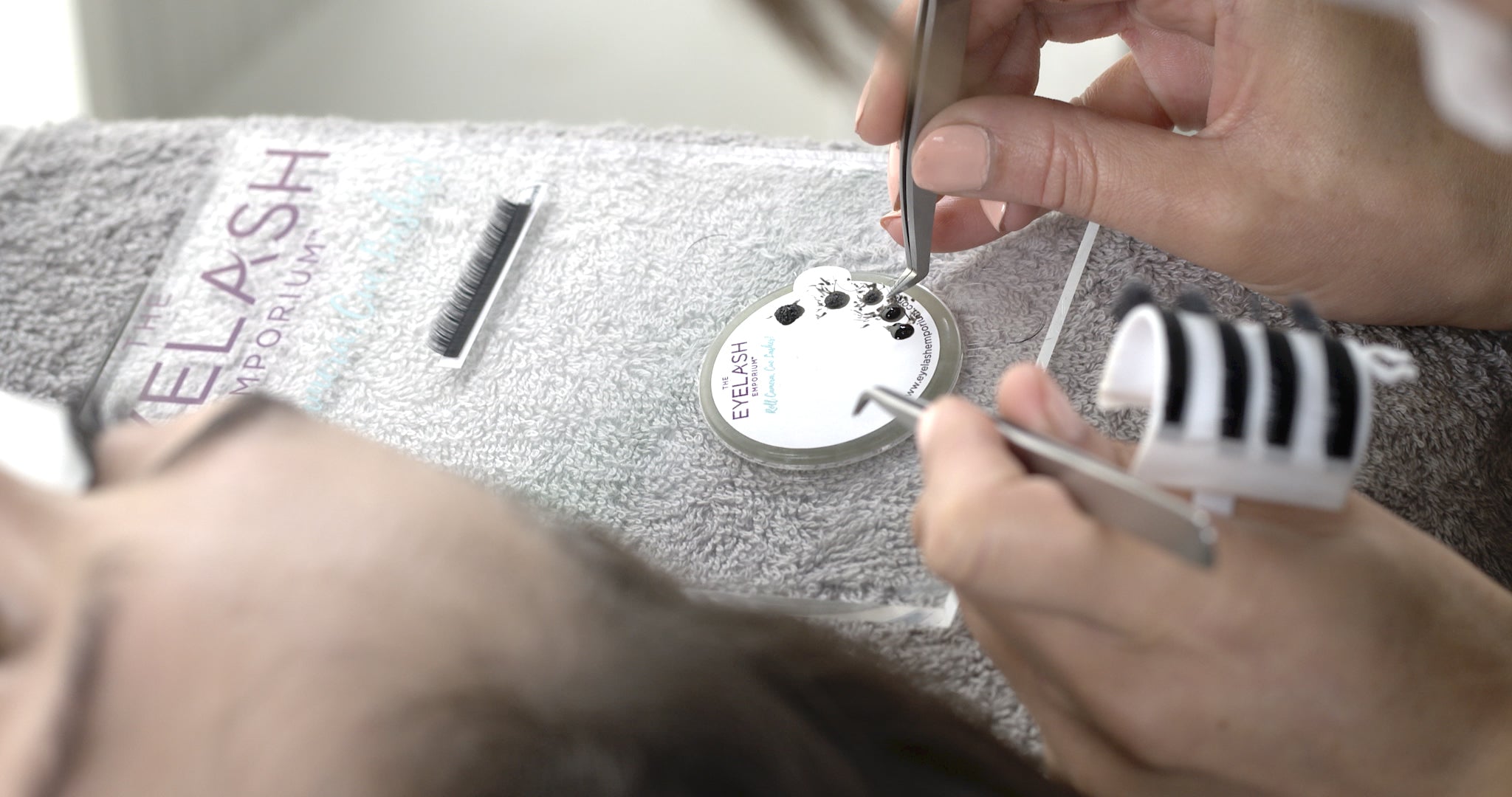Eyelash Extensions: Retention Problems?

Eyelash extension retention is one of the most common issues in the lash industry, often leading to unhappy clients and stressed out lash artists. Thankfully, there are ways to help you overcome these issues; developing your knowledge, education of technique and products used.
Do you really know the adhesive you’re working with?
There’s plenty of adhesives on the market, all of which have different guidelines on how to use them. Curing time and environment type are two factors that you should be considering when selecting your adhesive.
Research is so important, many technicians don’t give adhesives a chance, they jump ship too quickly due to lack of research, resulting in poor performance. Ask the company questions, request an MSDS sheet (material safety data sheet) to ensure it meets EU regulations and keep this on file, work in the recommended temperatures and humidity levels as this is a huge part of ensuring good retention.
Cyanoacrylate is the bonding agent in your adhesive and it seeks moisture too cure, meaning your environmental conditions can affect the retention. Fortunately, technology has advanced allowing us to adapt to our environment as it changes and allow the best results. Invest in a thermal hygrometer, humidifier and de humidifier to alter temperature and moisture levels.
If you are an artist working with a medium adhesive, although this adhesive has a slightly longer setting time, this time is minimised when the humidity in your environment changes. For example, if your medium adhesive is normally listed at 3-5 seconds curing time, the higher the humidity, it will be closer to the 3 seconds quoted.
This works the same for fast acting adhesive. If the setting time is 2- 3 seconds and the artists are working in a high humidity environment, this means the adhesive is drying to quickly for them – YES, too quick! The lash will attach however, the positioning could be wrong, meaning poor retention.
Is your technique right for you?
Different training school’s will teach different techniques; dip and place, shimmy or swipe and place - there is no right or wrong way, just a better way!
Go with what feels right for you, however I suggest the swipe and place. The swipe and place motion allows us to distribute adhesive along the lash from base to tip, creating the best connection between extension and natural lash. Many see this as being too much adhesive and yes, this was the case in some training schools where they were using several beads to create the bond. Cyanoacrylate it simply adheres better with only a small thin layer, allowing the extensions to create a seamless, natural looking bond without looking clumpy on the natural lash.
Retention can be compromised when the bond hasn’t been made correctly onto the surface of the lash. Whilst lashes are not a complete flat surface, we have a bonding surface we want to connect and secure. Failing to attach correctly, no matter what technique you use, will mean every time the lashes are brushed upwards, washed with cleansers and slept on, the bond will weaken, and retention is comprised.
So, if a client complains of poor retention, ask yourself:
- Are you assessing your environment throughout the day and making the changes needed?
- Should you be using a medium adhesive in higher humidity levels?
- Is your application speed TOO quick meaning placement is compromised?!
Another factor to consider aside from adhesive and technique is the individual client – what health are their natural lashes in? Some clients may have poor retention on their natural lashes, meaning no matter how well you attach the extension or how perfect the environment is for the adhesive to cure, the natural lash could fall out quickly being no fault of your own.
So, don’t panic! There are always answers to problems, hopefully the suggestions in this blog will help improve retention and keep your clients coming back for more!
- Tags: Lashes


